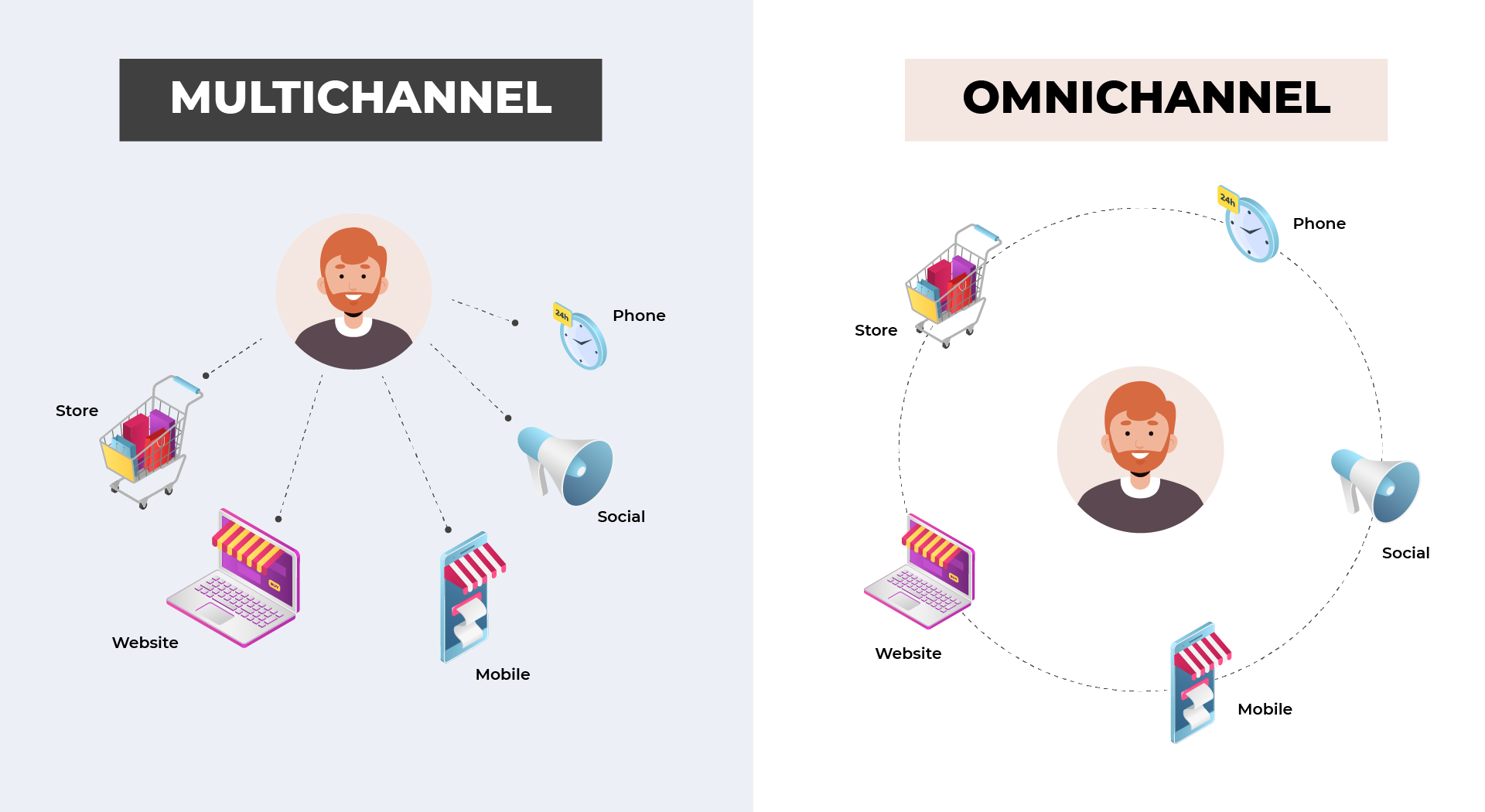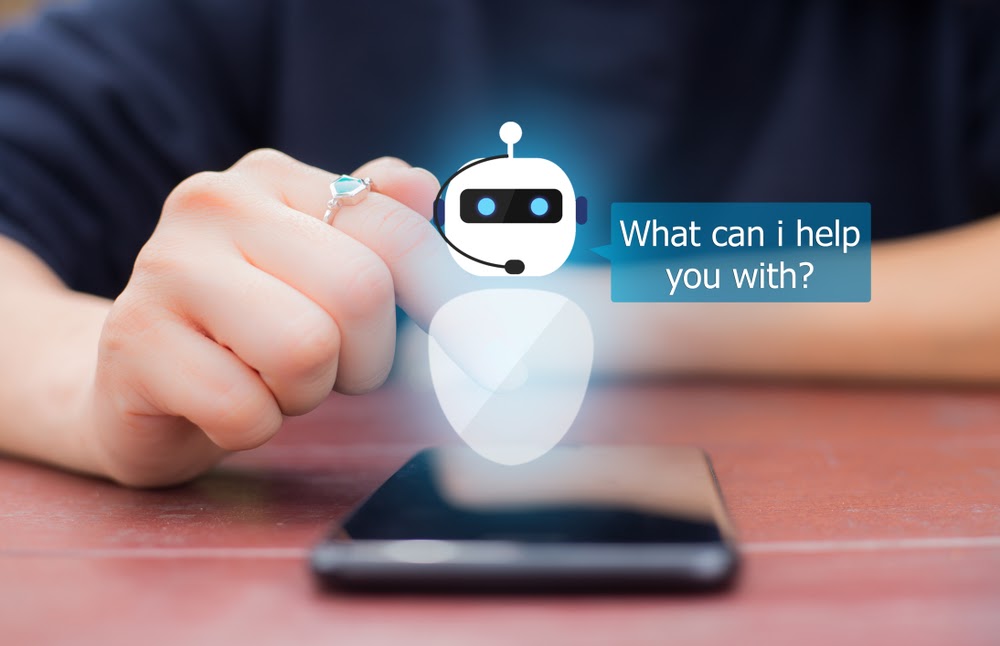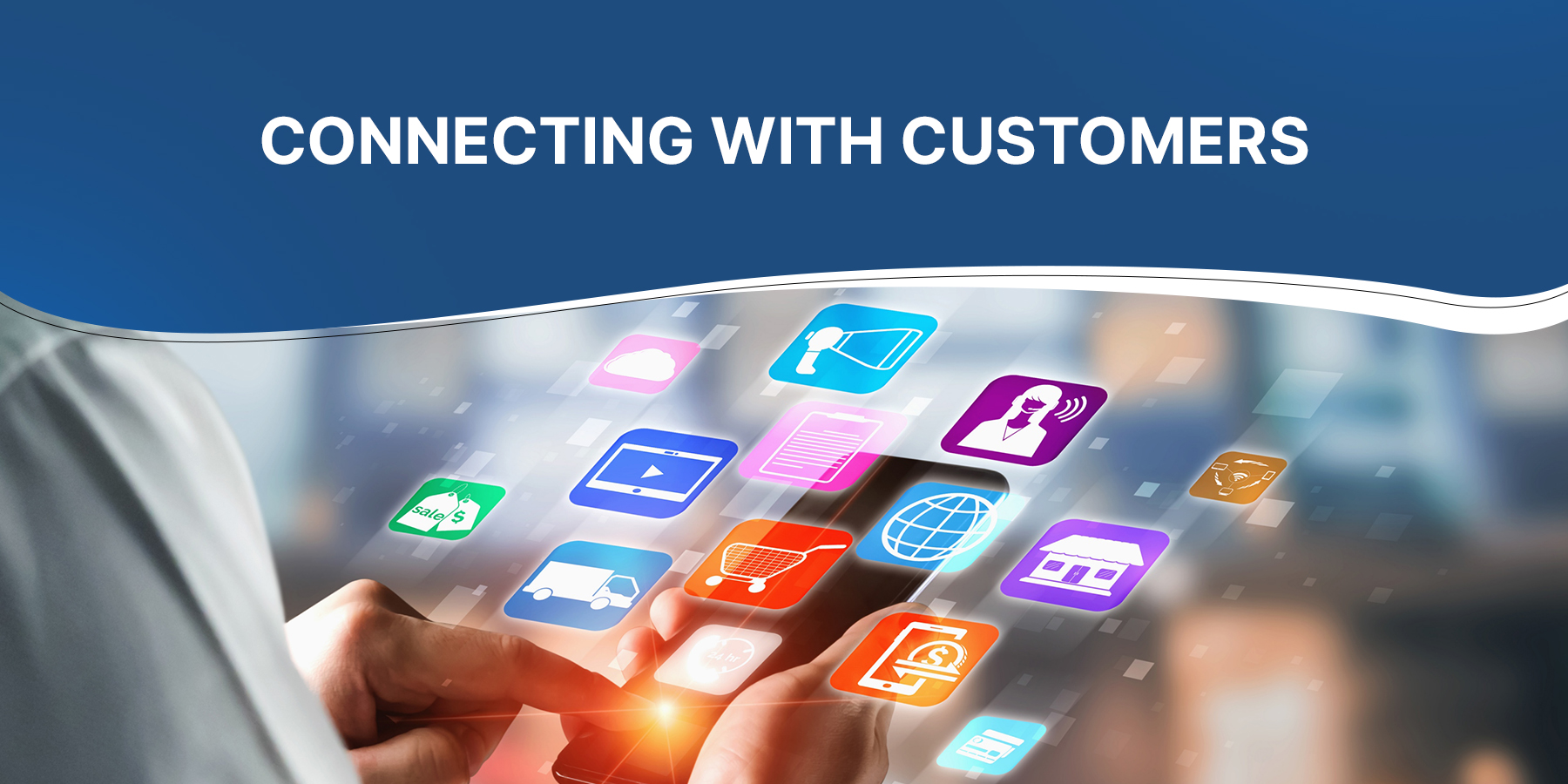From texting apps, social media channels to video chats and emails, the way we communicate has become accessible and seamless. Consumers expect the same level of communication efficiency with businesses as well. There are various interactions that companies have to manage throughout the sales and purchase cycle. It includes answering emails, calls, chats, social media messages, etc., promptly.
To be a successful brand in the market, you have to be available for your customers at all times. It implies going beyond conventional means of communication and choosing the most convenient platform for interaction. Although the multi-channel approach works great for customers, it can be challenging to maintain consistency for brands. It is where omnichannel customer service plays a pivotal role.

Mapping The Modern Customer Journey
The way customers shop has changed significantly, and so are their expectations from the brand. Though their purchase journey isn't predictable, customers expect you to cater to their needs on their preferred channels. They expect connected experiences irrespective of the channels that they use. Slight friction or a broken conversation might stop them from buying your products and services.
But, How to create this seamless experience? In this detailed article, I will discuss actionable tips to assist you in delivering a seamless customer experience.
Empower customers with self-service options
76% of the customers try to solve issues on their end before contacting customer support.
One of the best ways to empower your customers with self-service options is through chatbots or automated text messaging. Your company may have an FAQ (frequently asked questions) section on your website, but that's about as far as it goes.
Customers may be used to getting their answers fast through Google search or Wikipedia, so why not set up a chatbot program with an FAQ feature? Customers can ask questions and get an instant response. Moreover, brands can embed informational articles in email autoresponders.
Integrate AI
Approximately 73% of customers consider live chat the most satisfactory communication medium to interact with brands.
The future of customer support service is personalized. Technology has made it possible to deliver a tailored experience across every channel, even if that means engaging with your customers through an automated chatbot or voice-activated assistant rather than an actual human being.
AI can help you achieve this goal by learning what each customer wants and how they like to communicate. AI integrated chatbots can help your business improve customer satisfaction by delivering a more personalized experience.

Provide a smooth transition between AI to agent
69% of global customers prefer brands that offer proactive and seamless services and notifications.
For example, if your customer wants to hold a conversation with you instead of typing out their issues. This is especially important in retail and banking industries, where customers want to speak face-to-face when dealing with sensitive information. And, this means an agent needs to step in at the right time, on the right platform.
Make sure the transition is smooth, and they can switch over to phone or video chat without any hassle. Meanwhile, ensure the customer background from the chatbot is transferred on time to the agent with all the information in hand.
Use data intelligence to enhance customer experience
One-third of the consumers say that they are considering switching to another brand after one bad customer experience.
It is crucial to learn about your customers today. This data will provide insight into what they want, how they want it, and where they are looking for information. It can give you the competitive advantage in delivering a positive experience with your business from start to finish. Your agents and chatbot can utilize this information and provide quick customer support across channels effectively.
Empower agents to focus on what's important!
Let your agents focus on important customer interactions while you can automate the rest. Centralize your customer information to ensure your agent doesn't have to worry about the background work but focuses on what they need to do best - help your customers.
It's also time to automate common service requests to simplify and quicken the response time. This will help your agents focus on areas that require human intervention and deliver a personalized experience to each customer.
Communicate on social media channels
48% of consumers expect to get a reply from brands on social media within 24 hours
You can quickly respond to customer issues and interact with them while generating new business by monitoring your social media channel. But this doesn't mean that every message is a chance for revenue: You need to set up filters, so you don't get bogged down in the noise of other messages.
An example of responding to a customer on social media is asking for suggestions or recommendations. You can also use the channel as your way in with these people and create an opportunity for them to interact with your brand and ultimately buy from you.
Offer round-the-clock support
In today's hyperconnected world, customers expect to be able to reach you anytime and anywhere. If they can't contact your business 24/7 via a traditional phone line or chat interface, the chances are good that they'll turn to social media instead. That might seem like a great way to vent their frustration – but it's also one of the worst ways to cultivate a good relationship with your customer.
When you're ready to go above and beyond what your competitors are offering, it's time to turn on the "24/7" light. Offering round-the-clock customer support service is a great way to prevent your customers from going elsewhere. Customers who need immediate service will be impressed by how fast they can get in touch with your company – and they'll be more likely to return the next time.
Get a 360-degree view of your customers
More than 35% of customers expect to connect with the same customer support service representative on various channels.
Omnichannel customer service is more than just talking to your customers on social media and over the phone. It's also about knowing where they are online and what they do there so that you can engage with them in a personal way at every touchpoint — whether it's across their preferred channels or not.
For example, if you see many Tweets coming from a specific location, research that area and find out what's going on. Perhaps there was an event recently, or the local economy is doing well — whatever it may be, connect with your customer to let them know they are in the limelight.
Assign the right people for the task
83% of customers believe that they feel more loyal towards a brand that resolves their complaints timely.
When your employees are equipped with the right knowledge, tools, and training to engage customers from different channels, you'll have a 360-degree view of their customer journey. Gather data from all sources so everyone on the desk can be as consistent as possible when delivering amazing service across every channel.
Moreover, if you don't have the budget to set up an internal customer support service, you can consider outsourced customer service. Wow, customer support is an efficient customer support outsourcing agency that will be available for your customer 24x7.
Wrapping Up
Modern customers are not easy to please, so brands have to go the extra mile to be available at all times. You have to learn everything you can about the customers to provide them with value and impact. Moreover, you should share the information you collect across the channel uniformly to create a panoramic view. Your multiple-point solutions should have a unified approach to provide seamless engagement.






